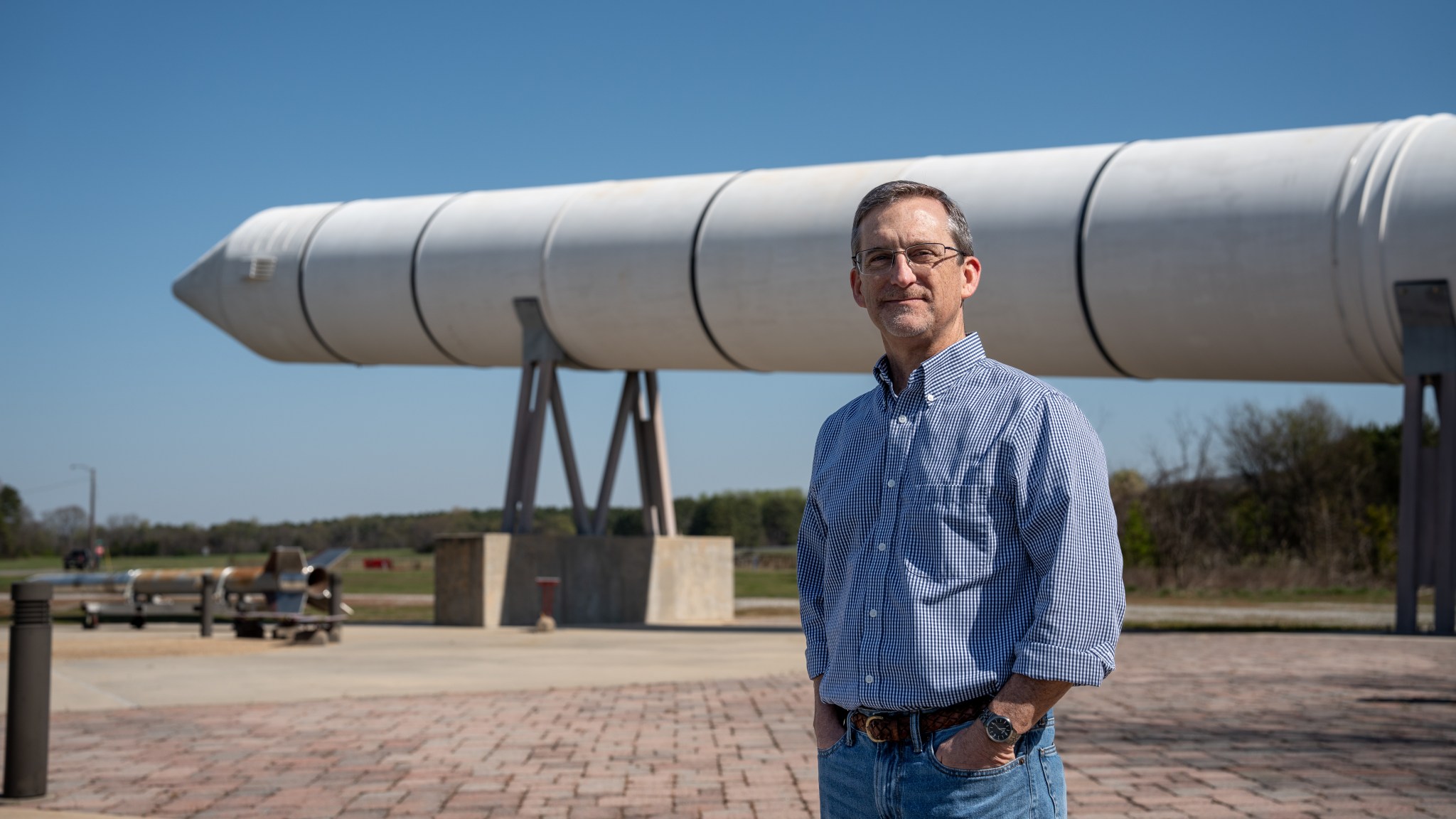I Am Artemis: Mat Bevill

Significant events in history keep finding Mat Bevill. As the associate chief engineer for NASA’s SLS (Space Launch System) Program, Bevill assists the program chief engineer by interfacing with each of the element chief engineers and helping make critical decisions for the development and flight of the SLS mega rocket that will power NASA’s Artemis campaign. With the launch of Artemis II, the first crewed test flight of SLS and the Orion spacecraft, Bevill’s technical leadership and support for the SLS Chief Engineer’s Office will place him, once again, at a notable moment in time.
“Think of me as the assistant coach. While the head coach is on the front line leading the team, I’m on the sidelines providing feedback and advising those efforts,” said Bevill. As a jack-of-all-trades, he enables progress in any way that he can, something he’s familiar with after 37 years with NASA. And, on Nov. 16, 2022, as the SLS rocket roared to life for the first time with the Artemis I test flight, Bevill couldn’t help but reflect on a lifetime of experiences and lessons that led to that moment.
Bevill began his NASA career while he was still attending the University of Tennessee at Chattanooga. During his sophomore year as a mechanical engineer student, he applied for the agency’s internship program at NASA’s Marshall Space Flight Center in Huntsville, Alabama.
Just a few months before Bevill began his journey with NASA, the Challenger accident occurred, taking the lives of all seven crewmembers in January 1986. Bevill joined the Solid Motor Branch at Marshall as teams across the agency worked to understand the cause of the accident. It was a fast-paced environment, and Bevill had to learn quickly about the solid rocket boosters.
“It was a surreal experience, but I was privileged to work with those people. We were figuring out tough lessons together and working toward a common goal,” Bevill recalls.
Those tough lessons provided Bevill with tremendous hands-on experience related to the solid rocket booster hardware that would not only shape his career, but, later, the SLS rocket. The five-segment solid rocket boosters that provide more than 75% of thrust for SLS to go to the Moon are based on the same four-segment design that powered 135 shuttle missions to low Earth orbit. His experience from his time with the shuttle led him to deputy chief engineer for the SLS Boosters Office.
Just as for Artemis I, Bevill will be standing by and serving as the “assistant coach” for Artemis II as the SLS rocket, once again, takes flight and sends the first crewed Artemis mission around the Moon. “SLS has been the crowning jewel of my career, and I consider myself blessed to be a part of NASA’s history,” Bevill said.
SLS is part of NASA’s backbone for deep space exploration, along with the Orion spacecraft, advanced spacesuits and rovers, the Gateway in orbit around the Moon, and commercial human landing systems. SLS is the only rocket that can send Orion, astronauts, and supplies to the Moon in a single launch.
Powered by WPeMatico
Get The Details…
Lee Mohon



